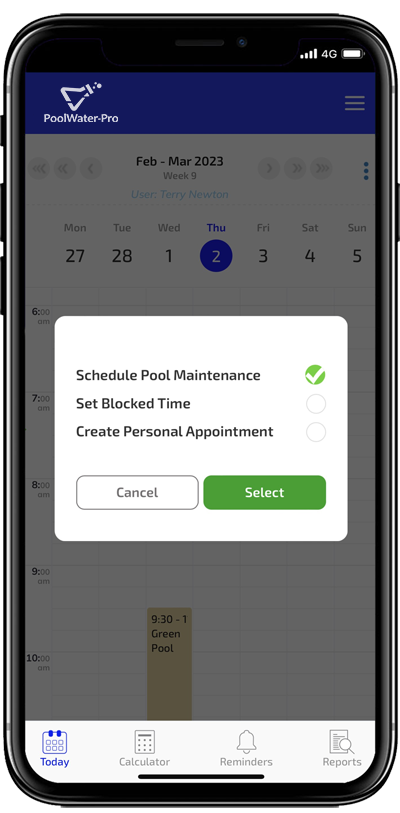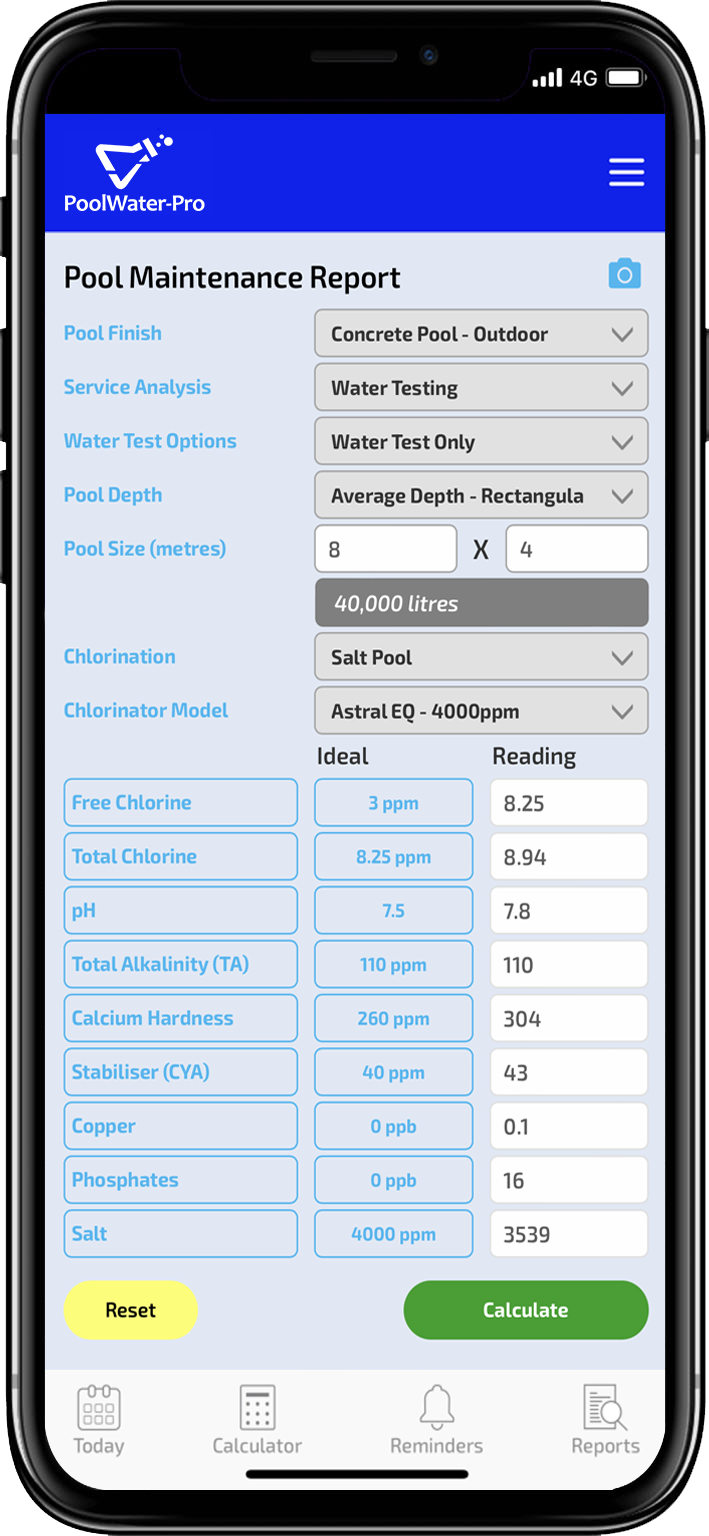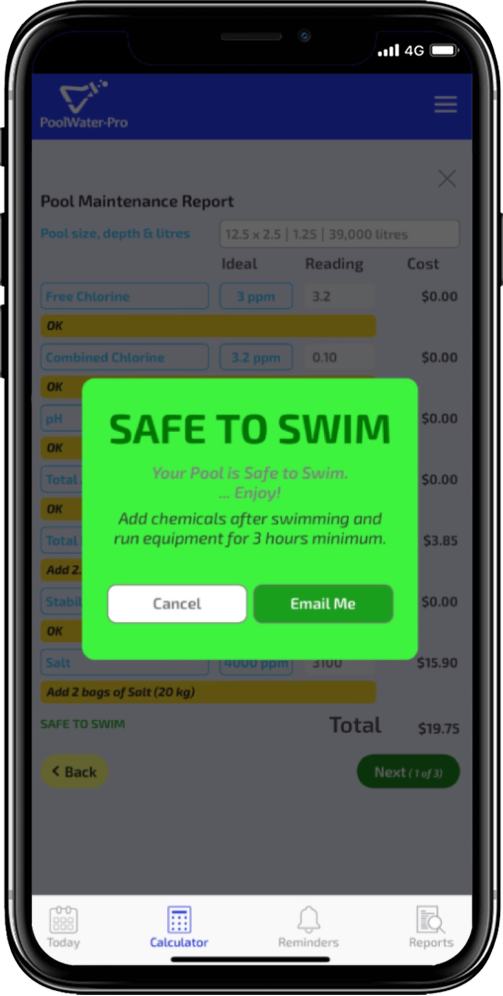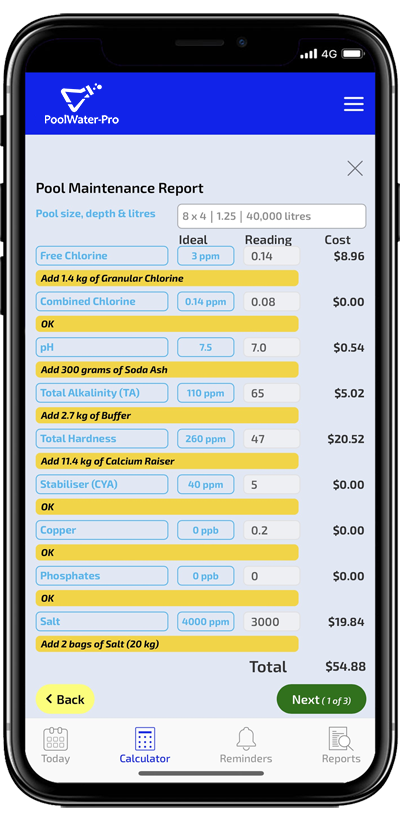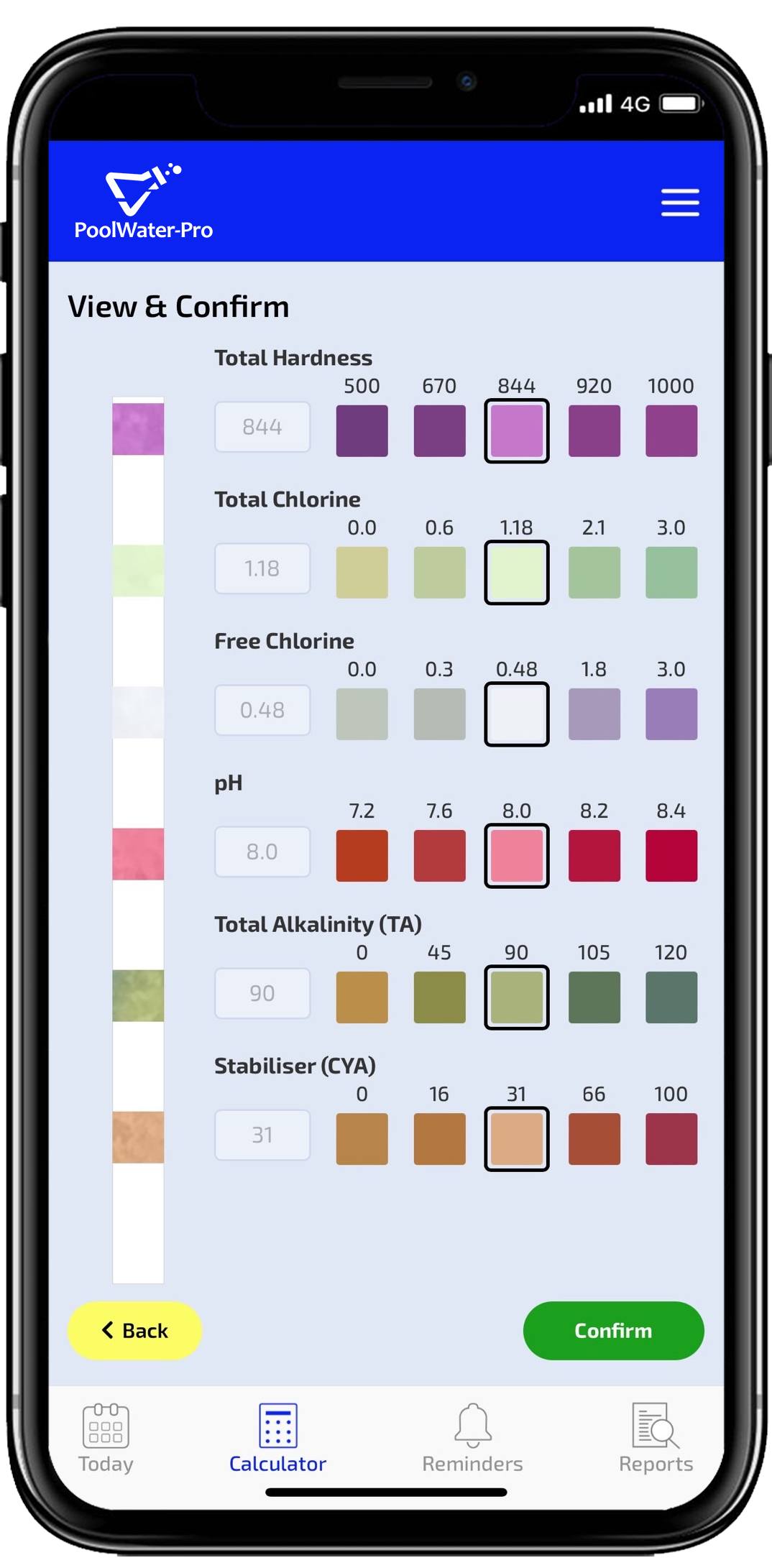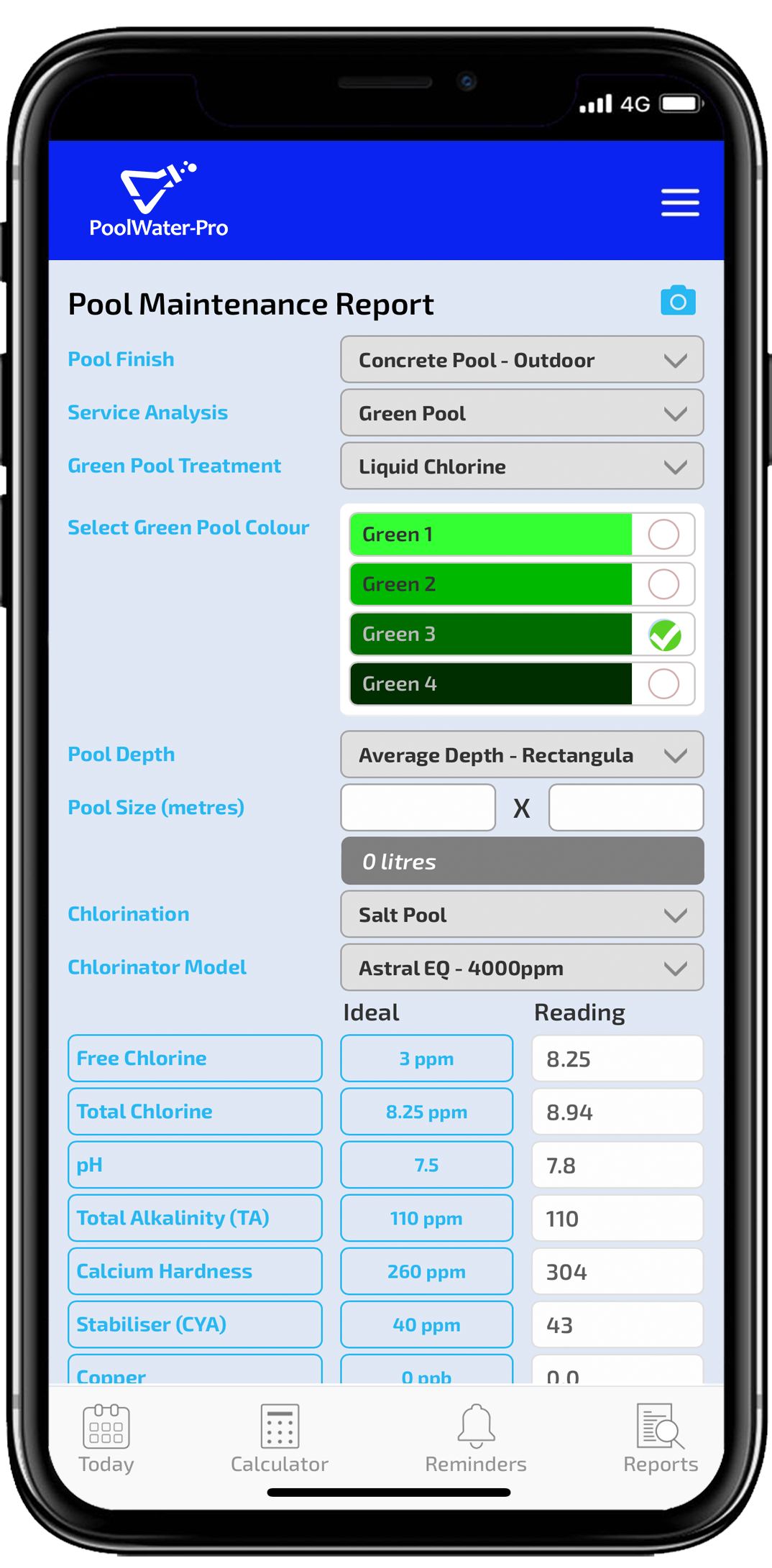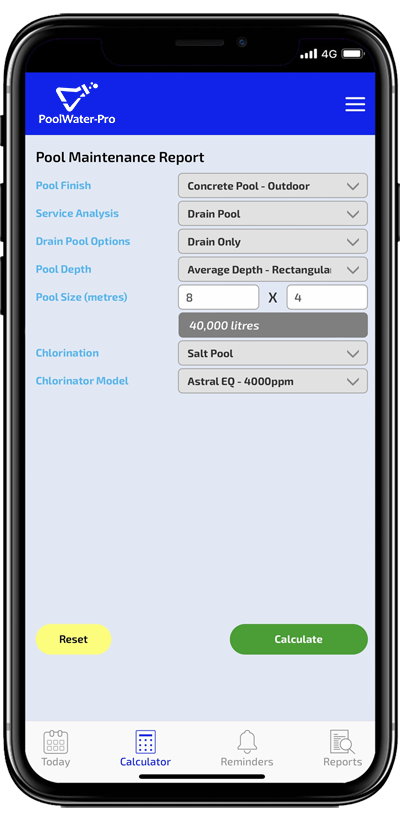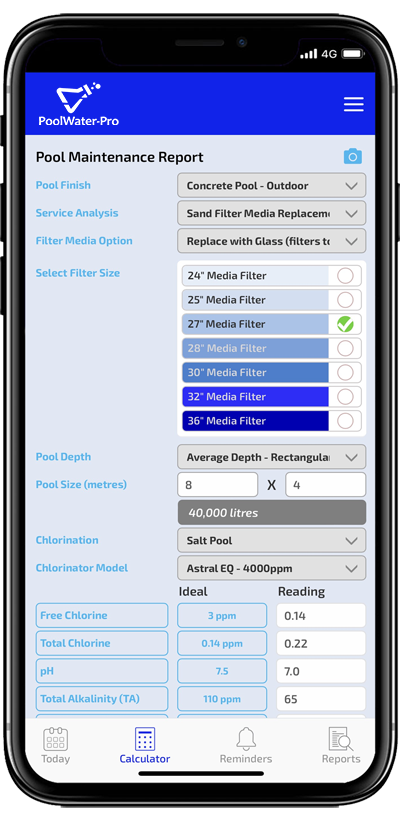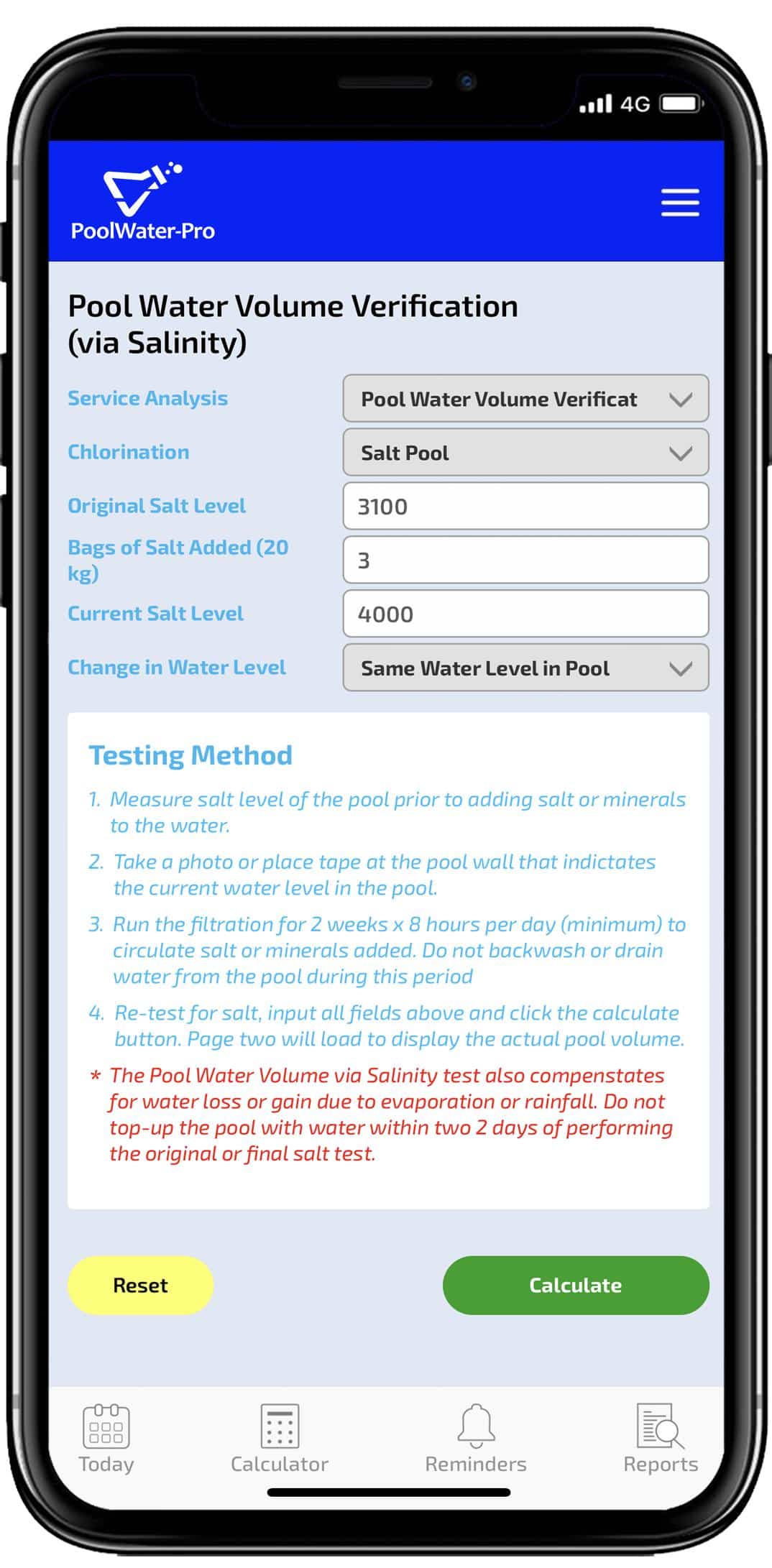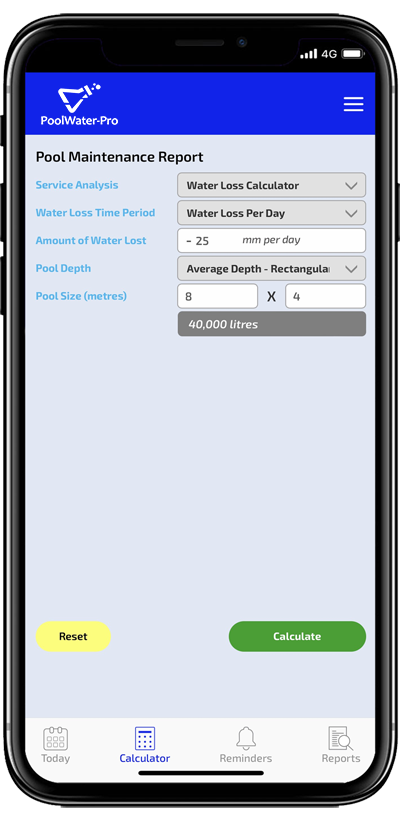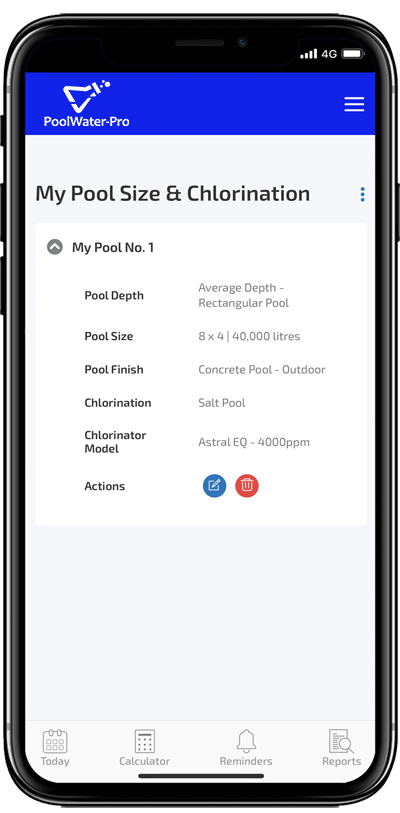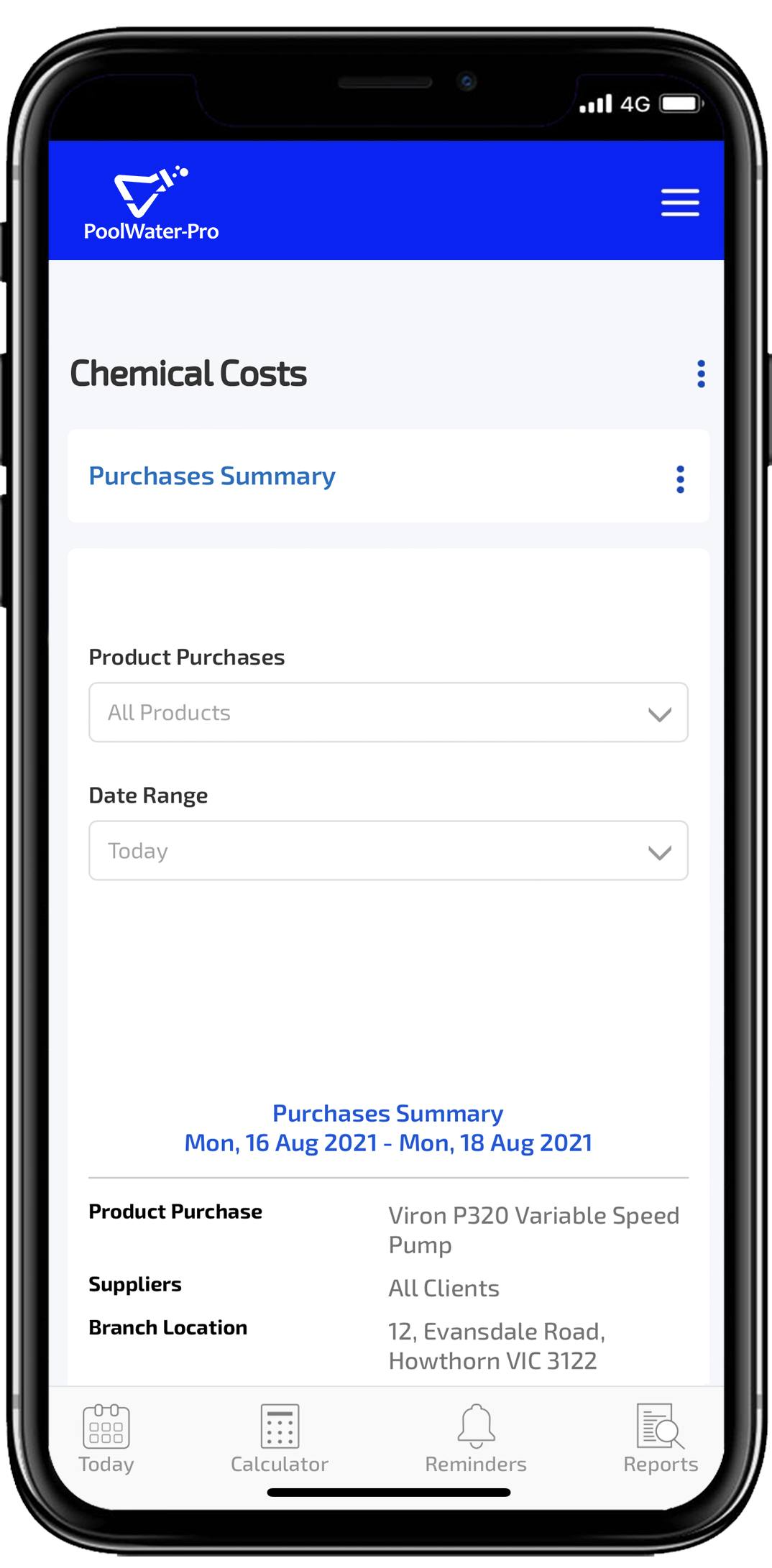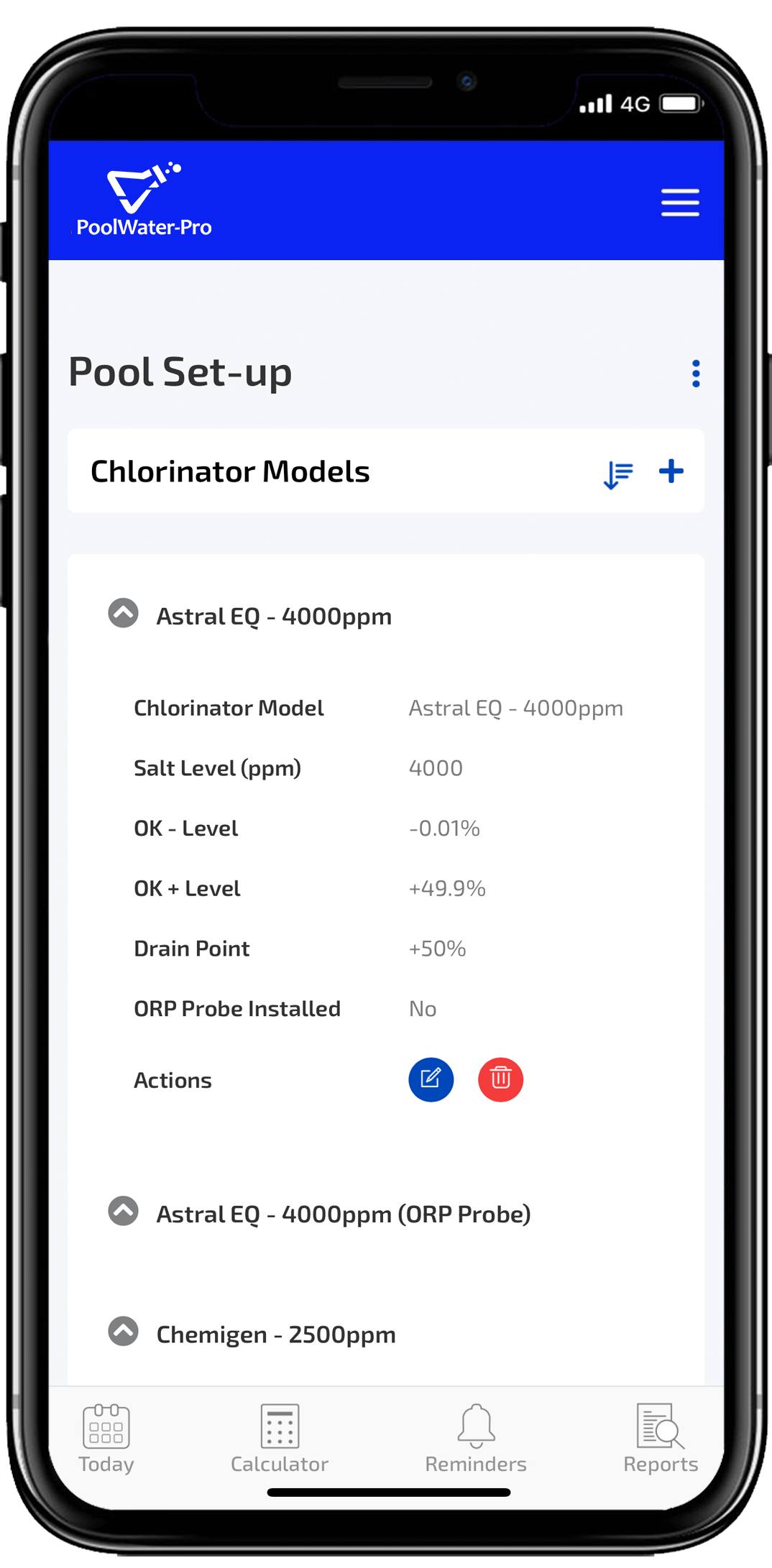What is Alkalinity and How to Adjust It?
Total alkalinity measures all alkaline substances (iconic compounds) that are dissolved in your pool water. These compounds include bicarbonates, carbonates and hydroxides, along with a few others such as cyanurate alkalinity.
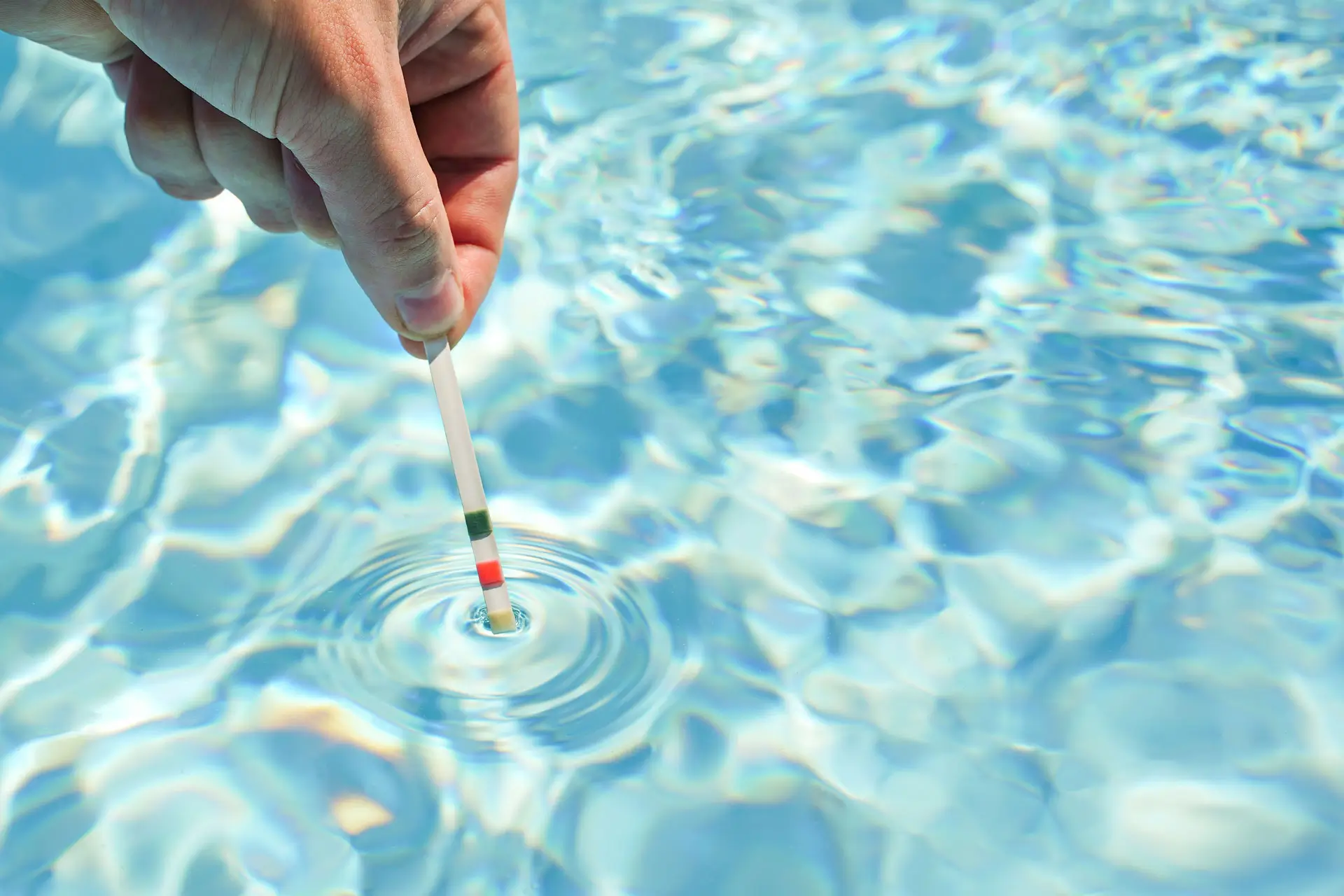
- Alkalinity & Pool Water Balance
- Symptoms of Alkalinity Imbalance
- Factors Influencing Alkalinity
- How to Adjust Alkalinity Levels
Alkalinity & Pool Water Balance
When alkalinity levels are in check, it helps to stop rapid pH fluctuations that can lead to water problems.
pH is an abbreviation for “potential hydrogen” and is a measurement of water acidity. The pH scale ranges from 0 to 14, where 7 is neutral. Anything above 7 is alkaline and everything below is acidic.
In swimming pools ideal range for pH levels is between 7.2 to 7.8. Recommended pH for concrete or vinyl liner pools is 7.4. The optimal for fibreglass pools is 7.2.
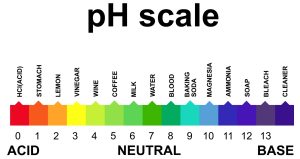
Symptoms of Alkalinity Imbalance
There are a few clear signs when your pool’s alkalinity is out of balance. If it’s too low, the water can become corrosive, irritating swimmers’ skin and eyes and damaging pool surfaces and equipment.
If alkalinity is too high, it can lead to calcium scaling or cloudy deposits forming because of pH and calcium interactions. This can also make the water appear cloudy and difficult to keep the water clean.
Keeping an eye on these symptoms will help you to maintain a healthy pool.
Factors Influencing Alkalinity
There are several different factors always influencing alkalinity levels in your pool.
pH Levels
The relationship between alkalinity and pH levels in a pool is intertwined.
- High pH levels can increase alkalinity, making the water too alkaline, while low pH levels may reduce alkalinity, making the water acidic.
- Keeping pH between 7.2 to 7.6 will help to better manage alkalinity levels.
- Around 80% of pools that maintain pH in this range experience less issues with alkalinity imbalance.
Water Source
The water source for the pool significantly impacts alkalinity levels.
- As an example, well water often has higher alkalinity than municipal water supplies.
- Statistics indicate that pools filled with healthy water show a 25% higher average alkalinity level upon initial filling, requiring adjustments to achieve the ideal chemical balance.
Chemical Additions
Adding chemicals to adjust your pool’s pH will affect its alkalinity.
- For example, sodium bicarbonate will increase alkalinity, while muriatic acid or hydrochloric acid lowers it.
- Adding Sodium carbonate, known as soda ash to increase pH, will also increase alkalinity.
- It’s estimated that over 70% of pool owners need to adjust their pool’s alkalinity at least once a month due to chemical additions.
Environmental Factors
Environmental elements like rainfall, falling debris and organic matter can alter your pool’s alkalinity levels.
- Acidic rain lowers alkalinity, requiring adjustments to restore chemical balance.
- In regions prone to high rainfall, pools may experience a 10-15% fluctuation in alkalinity levels during the rainy season.
Pool Usage
The frequency of pool use can impact the water’s alkalinity.
- Human bodies introduce various substances, such as sweat and cosmetics, which can affect the water’s chemistry.
- Pools with high-usage may experience increased alkalinity levels of up to 5% compared to those with minimal use, underscoring the need the regularly test your water.

How to Adjust Alkalinity Levels
Add chemicals according to manufacturer instruction for dosage and application.
Alkalinity target levels are 80-120 ppm.
Increase Total Alkalinity Levels
There are various products available to increase alkalinity such as Buffer, Alkalinity Increaser or Alkalinity Up.
They all contain sodium bicarbonate, commonly known as bicarbonate of soda or baking soda.
Decrease Total Alkalinity Levels
Hydrochloric Acid, Muriatic Acid, or Dry Acid is used to lower alkalinity levels in your pool.
Dry acid also known as pH Down or pH Minus is made from sodium bisulphate.
It’s safer to use and less corrosive than hydrochloric or muriatic acid, but still must be handled with care.

When alkalinity levels are in check, it helps to stop rapid pH fluctuations that can lead to water problems.
pH is an abbreviation for “potential hydrogen” and is a measurement of water acidity. The pH scale ranges from 0 to 14, where 7 is neutral. Anything above 7 is alkaline and everything below is acidic.
In swimming pools ideal range for pH levels is between 7.2 to 7.8. Recommended pH for concrete or vinyl liner pools is 7.4. The optimal for fibreglass pools is 7.2.

There are a few clear signs when your pool’s alkalinity is out of balance. If it’s too low, the water can become corrosive, irritating swimmers’ skin and eyes and damaging pool surfaces and equipment.
If alkalinity is too high, it can lead to calcium scaling or cloudy deposits forming because of pH and calcium interactions. This can also make the water appear cloudy and difficult to keep the water clean.
Keeping an eye on these symptoms will help you to maintain a healthy pool.
There are several different factors always influencing alkalinity levels in your pool.
pH Levels
The relationship between alkalinity and pH levels in a pool is intertwined.
- High pH levels can increase alkalinity, making the water too alkaline, while low pH levels may reduce alkalinity, making the water acidic.
- Keeping pH between 7.2 to 7.6 will help to better manage alkalinity levels.
- Around 80% of pools that maintain pH in this range experience less issues with alkalinity imbalance.
Water Source
The water source for the pool significantly impacts alkalinity levels.
- As an example, well water often has higher alkalinity than municipal water supplies.
- Statistics indicate that pools filled with healthy water show a 25% higher average alkalinity level upon initial filling, requiring adjustments to achieve the ideal chemical balance.
Chemical Additions
Adding chemicals to adjust your pool’s pH will affect its alkalinity.
- For example, sodium bicarbonate will increase alkalinity, while muriatic acid or hydrochloric acid lowers it.
- Adding Sodium carbonate, known as soda ash to increase pH, will also increase alkalinity.
- It’s estimated that over 70% of pool owners need to adjust their pool’s alkalinity at least once a month due to chemical additions.
Environmental Factors
Environmental elements like rainfall, falling debris and organic matter can alter your pool’s alkalinity levels.
- Acidic rain lowers alkalinity, requiring adjustments to restore chemical balance.
- In regions prone to high rainfall, pools may experience a 10-15% fluctuation in alkalinity levels during the rainy season.
Pool Usage
The frequency of pool use can impact the water’s alkalinity.
- Human bodies introduce various substances, such as sweat and cosmetics, which can affect the water’s chemistry.
- Pools with high-usage may experience increased alkalinity levels of up to 5% compared to those with minimal use, underscoring the need the regularly test your water.

Add chemicals according to manufacturer instruction for dosage and application.
Alkalinity target levels are 80-120 ppm.
Increase Total Alkalinity Levels
There are various products available to increase alkalinity such as Buffer, Alkalinity Increaser or Alkalinity Up.
They all contain sodium bicarbonate, commonly known as bicarbonate of soda or baking soda.
Decrease Total Alkalinity Levels
Hydrochloric Acid, Muriatic Acid, or Dry Acid is used to lower alkalinity levels in your pool.
Dry acid also known as pH Down or pH Minus is made from sodium bisulphate.
It’s safer to use and less corrosive than hydrochloric or muriatic acid, but still must be handled with care.

Introducing Effective Solutions
Simplify your pool maintenance routine with POOLWATER-PRO. Our software turns test-strips into accurate digital readings, right from your phone. Get instant alerts to know if your pool is safe to swim, plus any chemicals needed.
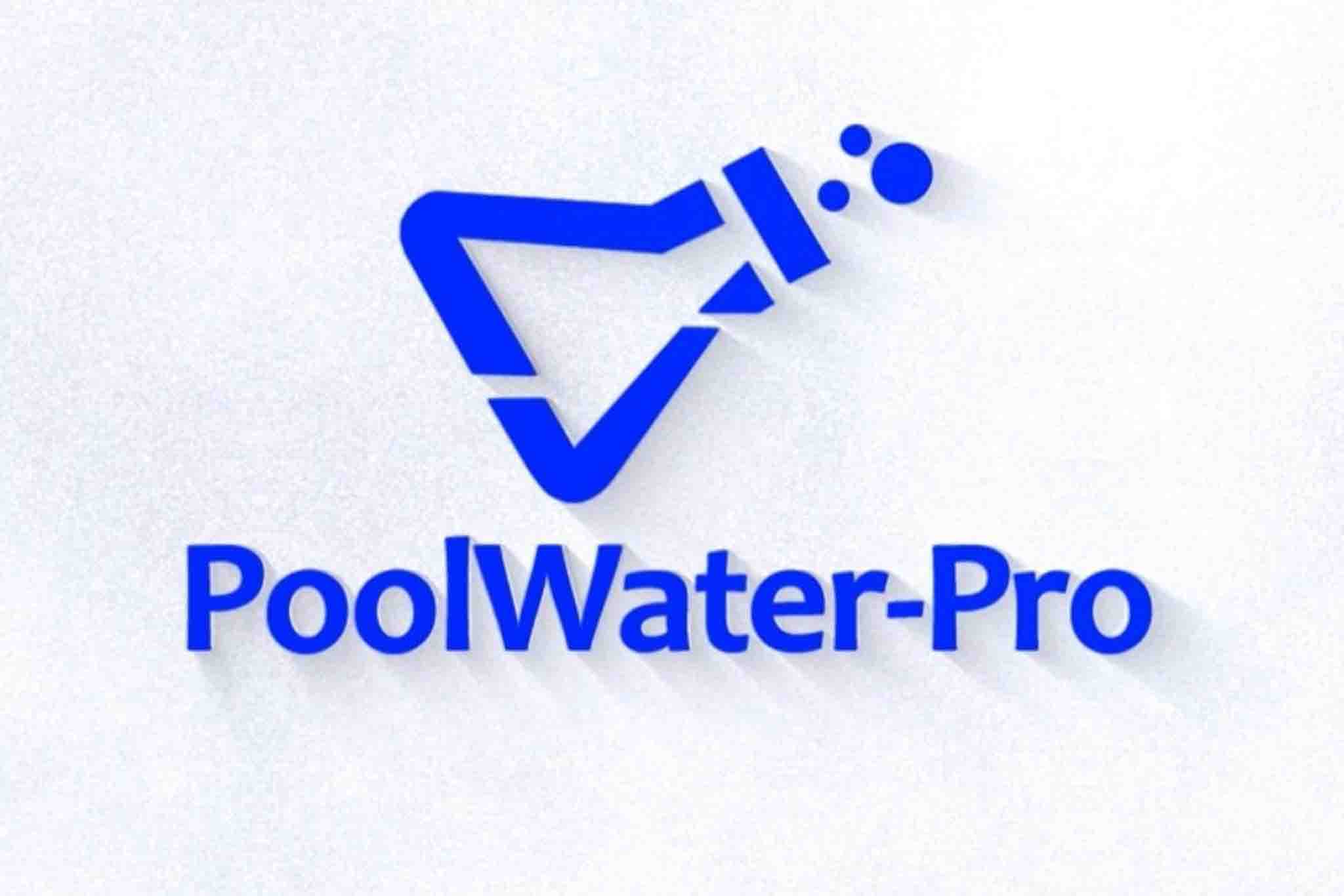
Introducing Effective Solutions
Simplify your pool maintenance routine with POOLWATER-PRO. Our software turns test-strips into accurate digital readings, right from your phone. Get instant alerts to know if your pool is safe to swim, plus any chemicals needed.

Your Path to Clarity
Watch this quick explainer video to see the platform’s features and how it can make pool care hassle-free.
Watch this quick explainer video to see the platform’s features and how it can make pool care hassle-free.




